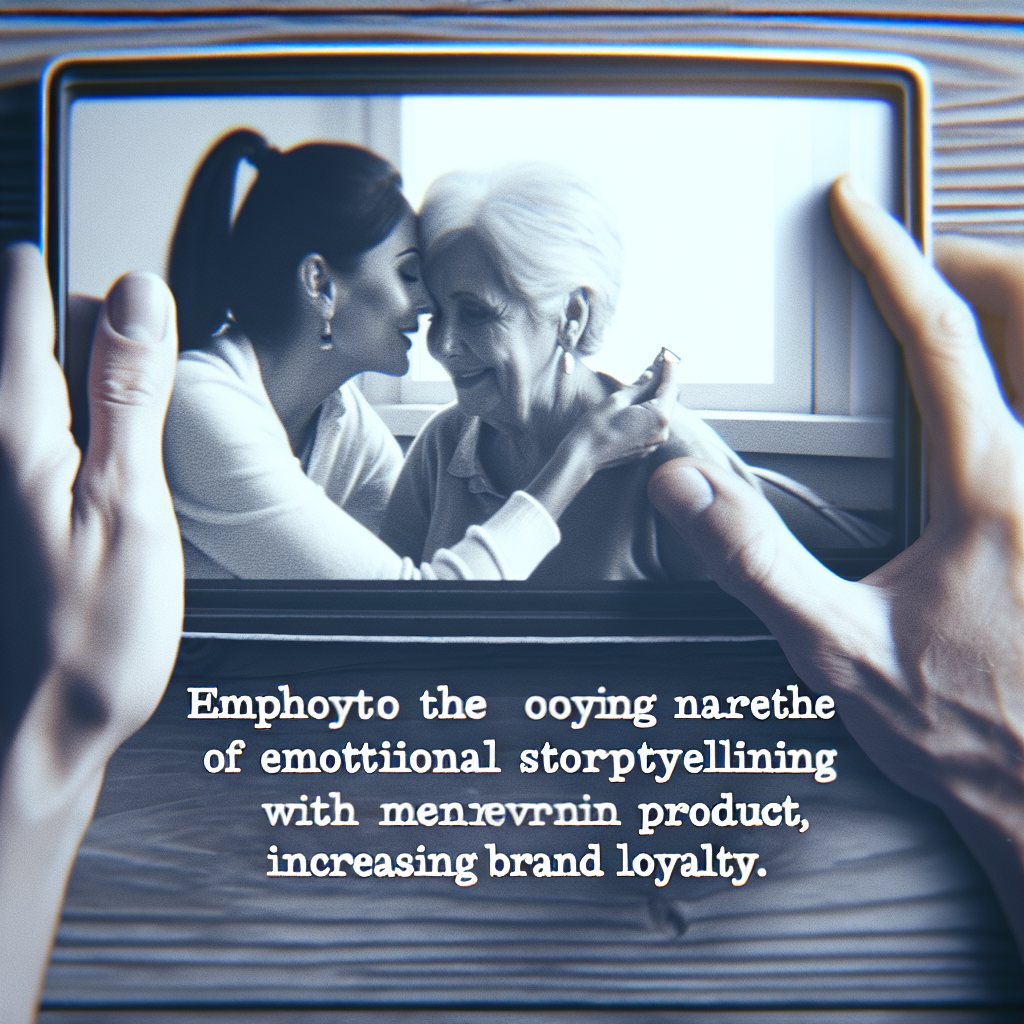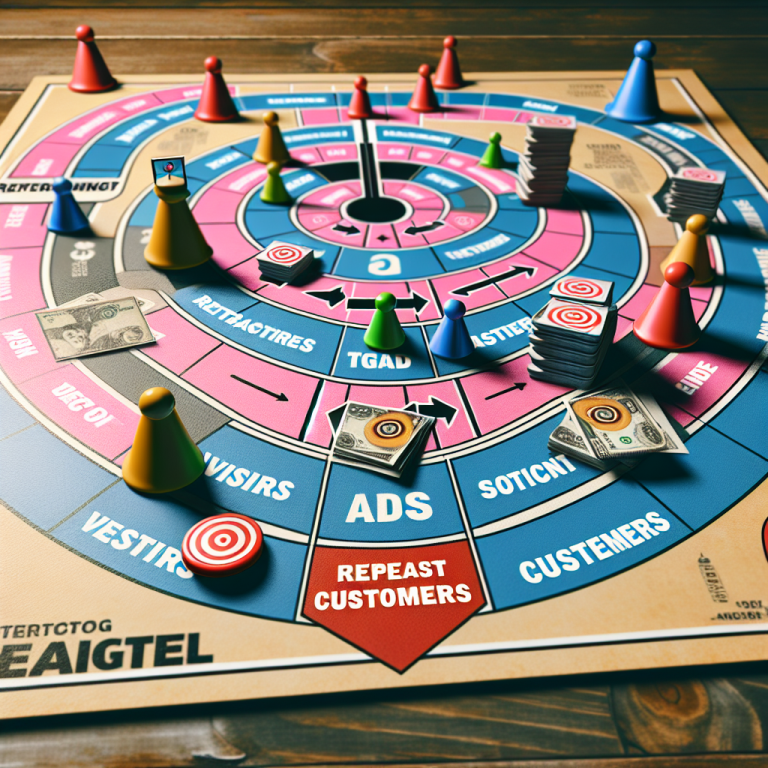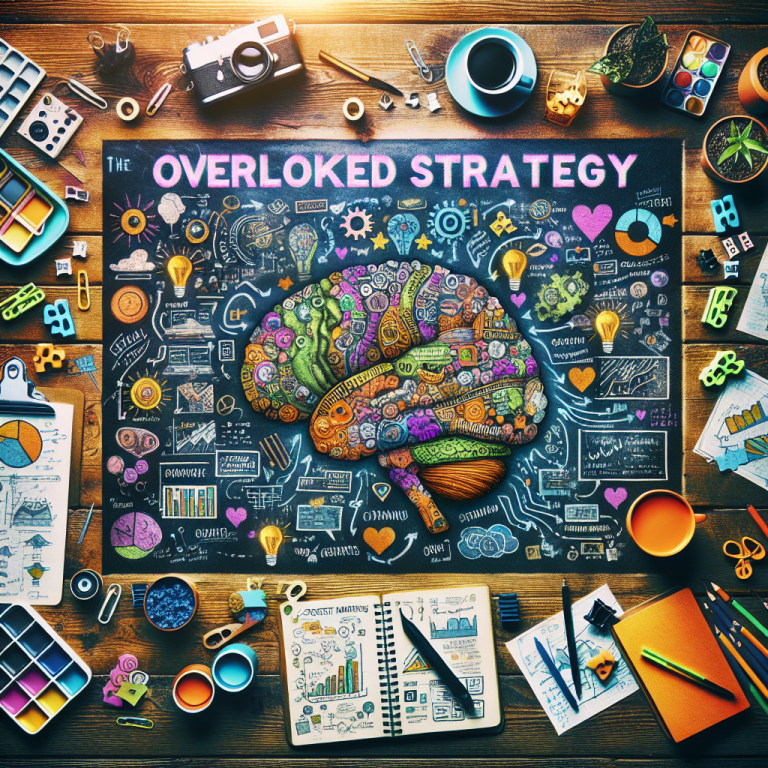The Power of Emotional Storytelling in Video Marketing to Increase Brand Loyalty
1. Understanding Emotional Storytelling
What is Emotional Storytelling?
Emotional storytelling is all about connecting with your audience on a deeper level, tapping into feelings and memories that resonate. It’s not just about selling a product; it’s creating a narrative that people can relate to, one that can evoke emotions such as joy, nostalgia, or even sadness. When I first embraced this concept, I realized it turned a simple video into a powerful tool for engagement.
A story that stirs emotion can make your brand memorable. Think of those ads that give you the feels—you remember them for years. The key lies in crafting a narrative that aligns with your brand’s identity while genuinely addressing the audience’s emotions.
As I began to research this more, I found that stories elicit emotional responses that can influence decision-making. Understanding what emotional storytelling is and how it fits into video marketing was my first step to creating compelling content.
Why Emotions Matter in Marketing
Emotions drive decisions. It’s a simple yet profound truth. When I look back at my experiences, I’ve seen firsthand how a heartfelt story can lead customers to choose one brand over another, often with little to no logical reasoning behind it. The stats back this up—people are drawn to brands that make them feel good.
People also share emotional stories. This means that emotionally charged videos can garner a wider reach if they resonate. For every moment that I’ve managed to tap into a viewer’s heartstrings, I’ve seen the potential for a ripple effect—shares, likes, comments… a loyal community forms around shared experiences.
So, why not harness these emotions in your marketing strategies? It’s all about building that connection. When your audience feels something, they are more likely to remember your brand and even share it.
Elements of a Good Emotional Story
A compelling emotional story has certain elements that make it effective. Firstly, relatability is crucial. It pulls the audience in because they can see themselves or their experiences reflected in the narrative. Secondly, conflict is important—it drives the story and keeps viewers engaged. And lastly, resolution provides a sense of closure and positivity, often aligning with the brand’s message.
In my projects, I always keep these elements in mind when scripting a video. Starting with the protagonist (often a customer or relatable character), to building a conflict that resonates with them, and ultimately leading to a resolution that reflects the brand’s value or product. Each step strengthens the emotional bond.
Additionally, authenticity is a must. Audiences can sense when something feels forced or acted. Your story should be genuine; it reflects your brand’s ethos, making it even more powerful.
2. Crafting Authentic Narratives
The Importance of Authenticity
Authenticity isn’t just a buzzword; it’s the backbone of emotional storytelling. When I initially started in video marketing, I thought I could create compelling content just with flashy graphics and catchy music. But let me tell you, nothing beats a real story from a real person. It connects, it humanizes. That’s where the magic happens.
The audience can tell if a narrative is authentic or fabricated. That’s why I always encourage brands to share their journeys—challenges, triumphs, and everything in between. It creates a sense of trust, which is pivotal for building brand loyalty.
The brands I admire most are those that wear their struggles and successes like badges of honor. This authenticity resonates deeply with their audience, fostering a community that feels connected on a personal level.
Building a Relatable Character
In every great story, there’s a character that the audience can relate to—this could be a customer, an employee, or even a founder. When I set out to create narratives, I always think about who this character is and what challenges they face. It’s crucial that this character feels like a ‘real’ person—their struggles should mirror those of your target audience.
For instance, if your brand is focused on eco-friendly products, showcase a character who shares their journey toward more sustainable living. Their ups and downs will resonate with your audience, forging a stronger connection to your brand.
The more your audience sees parts of themselves in the character, the better they will connect emotionally with the narrative. This connection can result in a strong allegiance to your brand.
Writing for Emotional Impact
The writing process for emotional storytelling is all about crafting language that resonates. I often use vivid imagery and relatable experiences in scripts to draw the audience in. It’s about painting a picture that makes viewers feel something right in their gut.
When crafting your narrative, think about the emotions you want to evoke. Do you want to spark joy? Inspire hope? Or maybe stir compassion? Each story needs to have a clear emotional objective, guiding the writing process seamlessly.
Additionally, the way you format your message can influence its emotional impact. Short sentences may convey urgency; longer sentences can evoke a sense of nostalgia or depth. This part of the process is both an art and a science, and honing this skill can make all the difference.
3. Engaging Through Visuals and Sounds
The Role of Visual Elements
When it comes to video marketing, we can’t overlook the significance of visuals. I’ve seen how powerful imagery can amplify a story’s emotional impact. High-quality visuals that represent the essence of the narrative instantly grab attention and can transform a mundane story into something unforgettable.
Color palettes play a significant role, too. A warm color palette can evoke feelings of comfort, while cooler tones may elicit modernity or calm. Selecting the right visuals that align with the emotions you wish to convey is crucial in storytelling.
Don’t shy away from powerful imagery, whether it’s a child’s smile, a family gathering, or a serene nature shot—these visuals can evoke the feelings you want your audience to experience. I always try to keep the visuals consistent with the story’s emotional core for maximum impact.
Utilizing Sound and Voice
Sound is just as important as visuals—it can set the mood and enhance emotional resonance. I can’t stress enough how the right background music can elevate a story. It can evoke nostalgia, excitement, joy, or sadness, depending on the tone you want to set.
Additionally, the voiceover adds another layer of engagement. A warm, relatable voice can directly connect with viewers, making the message feel personal. I always opt for voiceovers that reflect the emotions of the story—they need to align with the visuals and overall message.
Using sound strategically can amplify emotional storytelling in video marketing, creating an immersive experience for the audience that they won’t easily forget.
Editing for Emotional Flow
Editing is where you polish your entire narrative. It’s crucial to find the right pace to ensure that the emotional beats land effectively. I’ve learned through trial and error that sometimes less is more—cutting scenes that don’t contribute to emotional weight can strengthen the narrative.
Transitions play an important role, too. Successfully transitioning from one emotional moment to another can guide the audience’s experience and build momentum. When I’m editing, I always focus on how I want the audience to feel at each moment of the video.
It’s also vital to consider your audience’s attention span. Keeping content concise yet impactful is a balancing act. Finding this balance will ultimately lead to higher engagement rates, which is what we all strive for!
4. Measuring Emotional Impact
Understanding Metrics of Engagement
Now that we’ve created emotionally charged content, how can we evaluate its effectiveness? Engagement metrics are a great starting point. I continually monitor likes, shares, comments, and view durations to assess how well my stories resonate with viewers.
Engagement is one of those indicators that shows whether people are emotionally connecting with your content. Higher engagement rates typically indicate that your stories struck a chord with your audience. It’s always rewarding when you see those numbers reflect a genuine response!
However, remember to take qualitative data into account, too. Comments and feedback can often provide deeper insights into how the audience feels about your story. I’ve often found invaluable nuggets of information in the comments section that guide future content creation.
Feedback and Testing
One of my favorite ways to measure emotional impact is through audience feedback. Surveys, polls, or even casual conversations with your audience can provide essential insights. It’s fascinating to me how people interpret stories differently, and gathering feedback enhances future projects.
Testing different narratives can also lead to important lessons. Running A/B tests with various emotional tones can help you determine what your audience reacts to most strongly. This iterative approach allows me to refine my storytelling style and better connect with viewers.
For me, the goal of storytelling isn’t just to tell a good tale—it’s about figuring out how to make that emotional connection stick. The feedback I receive helps me polish my craft in phenomenal ways.
Long-Term Brand Loyalty
All this effort in creating emotional stories pays off in the long run through brand loyalty. When customers feel emotionally attached to a brand, they are more likely to stay loyal and even advocate for it. I’ve seen companies thrive by focusing on emotional connections; it really is a game changer.
Moreover, loyal customers often become brand ambassadors, sharing stories about their positive experiences. This organic advocacy can lead to exponential growth as their network is exposed to the brand through authentic channels.
Building lasting relationships isn’t just about short-term sales; it’s about fostering a community that supports the brand. The love and loyalty you garner from emotionally impactful storytelling can last for years—and that’s truly priceless.
5. Best Practices for Video Storytelling
Planning Your Video Story
Before diving into production, I find it crucial to map out a clear storyboard. This planning phase allows me to organize the narrative and ensure that each element aligns with the ultimate emotional goal. I’ve learned that spending time crafting a solid plan makes the production process smoother.
Outlining key moments, visuals, and audio can help keep the vision clear throughout filming. As spontaneous as storytelling may appear, having an organized plan allows for creativity to flourish effectively.
The detail-rich plans ensure no emotional beats are overlooked—it’s a little roadmap guiding the creation process to emotional storytelling success.
Consistency Across Platforms
Each content piece is an opportunity to reinforce the emotional story, so consistency is key. I strive to maintain a similar emotional tone and narrative thread across all platforms where my brand has a presence. This coherence helps to strengthen brand identity and keeps audiences engaged.
Let’s face it; today’s consumers are bombarded with content. Consistency in emotional messaging helps a brand stand out. When customers see your brand portraying similar stories and values, it builds trust and recognition.
Through my experience, I’ve found that working cohesively across all marketing channels—from social media to email to YouTube—creates a unified emotional experience that resonates with audiences consistently.
Iterate and Evolve
The beauty of storytelling is that it’s an ongoing process. I always encourage brands to iterate on their narratives based on audience feedback and engagement metrics. Emotional storytelling isn’t static; it evolves as cultural contexts and audience preferences change.
By continually learning and adapting your narrative strategies, you create fresh, relevant content that resonates with your audience at every turn. This willingness to evolve keeps your brand dynamic and in tune with the audience’s emotional landscape.
It’s a thrilling challenge, and I cherish the growth that comes with it—because at the end of the day, emotional storytelling is about building connections that last a lifetime.
FAQ
1. What is emotional storytelling in video marketing?
Emotional storytelling in video marketing is about crafting narratives that connect with audiences on a deeper emotional level, evoking feelings that resonate and foster brand loyalty.
2. Why is authenticity important in storytelling?
Authenticity builds trust with your audience. When they see genuine narratives that reflect real experiences, they’re more likely to connect emotionally and remain loyal to your brand.
3. How do visuals and sound enhance emotional storytelling?
Visuals engage audiences, while sound sets the mood and atmosphere. Together, they create a more immersive experience that amplifies emotional resonance in video content.
4. What metrics should I measure to evaluate emotional storytelling effectiveness?
Engagement metrics like likes, shares, comments, and feedback are crucial. Looking at both qualitative and quantitative data can help assess emotional impact.
5. How can I create a relatable character in my videos?
Creating a relatable character involves presenting someone who mirrors your audience’s experiences or challenges. Make sure this character’s journey aligns with your brand’s message to forge a deeper connection.









